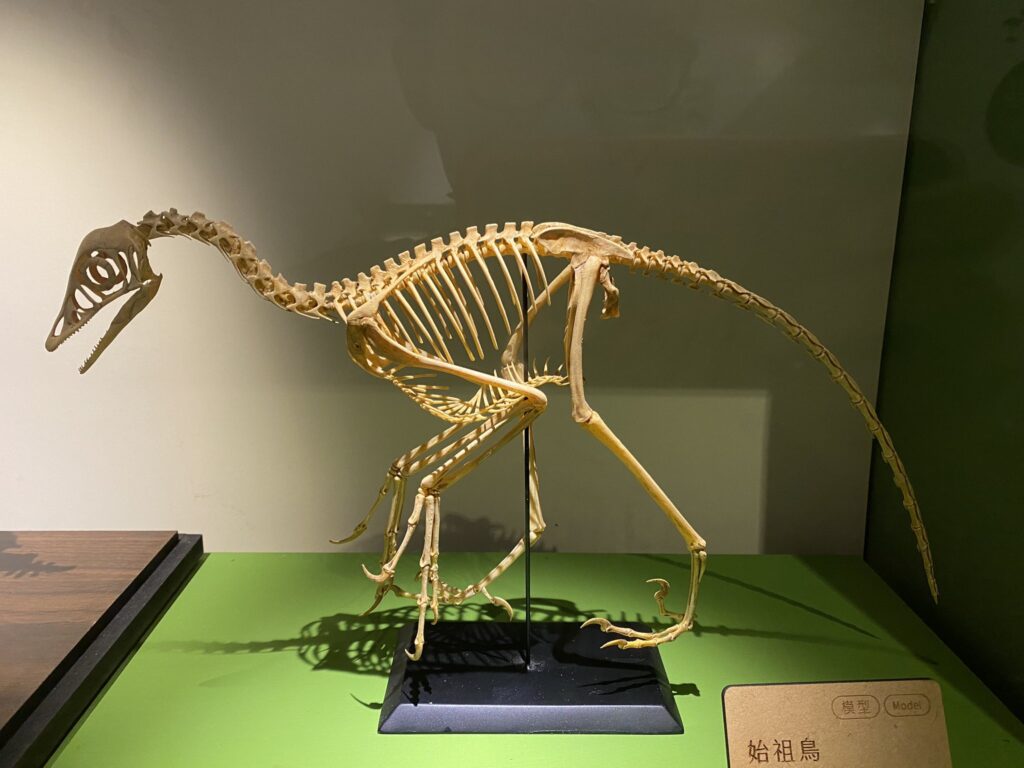In the vast narrative of Earth’s prehistoric past, few creatures embody evolutionary transition as dramatically as those caught between dinosaur and bird classifications. These fascinating animals lived during a pivotal moment in evolutionary history, displaying characteristics of both their dinosaurian ancestors and the birds they were becoming. The story of these transitional species offers a remarkable window into evolution in action, showing how nature experiments with forms and features before settling on successful adaptations. These creatures – neither fully dinosaur nor completely bird – challenge our understanding of taxonomic boundaries and reveal the complex, gradual process of evolutionary change that transformed fearsome reptiles into the feathered flyers we know today.
The Evolutionary Crossroads: Understanding Transitional Species
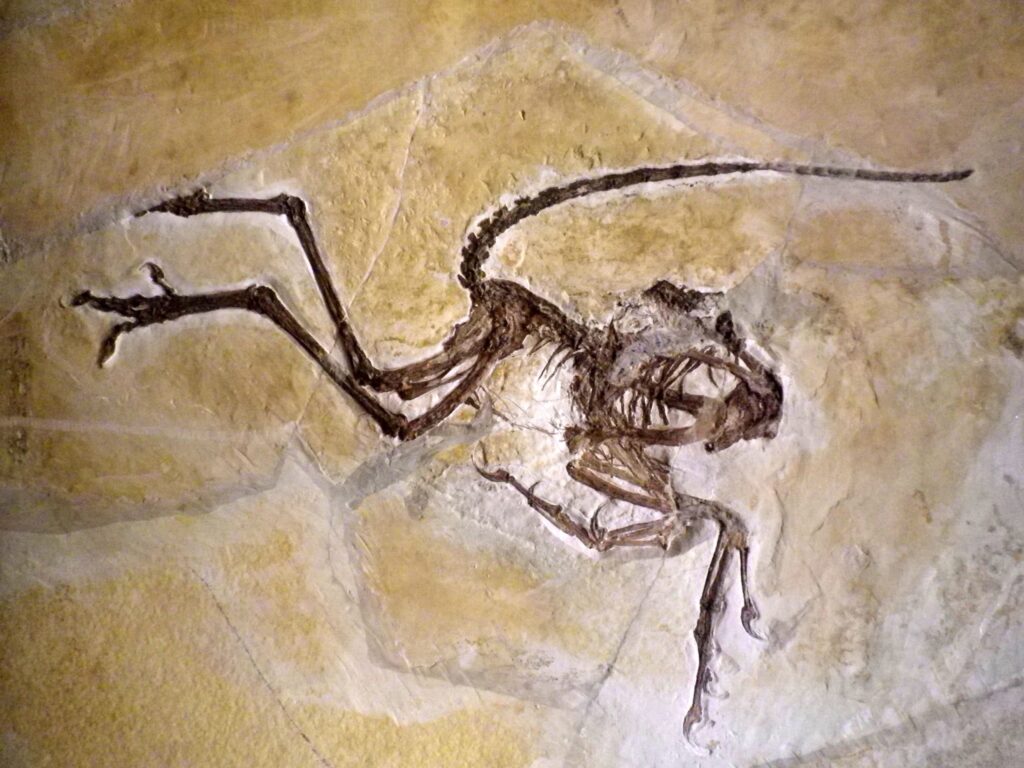
Transitional fossils represent crucial evidence for evolutionary theory, documenting the gradual transformation of one major group of organisms into another. In the case of the dinosaur-bird transition, these fossils show the incremental acquisition of avian features in theropod dinosaurs over millions of years. Rather than depicting a sudden jump from dinosaur to bird, these specimens reveal a mosaic pattern of evolution where different bird-like traits appeared at different times and in different lineages. Some features, like feathers, appeared surprisingly early in dinosaur evolution, while others, such as fully developed wings capable of powered flight, emerged much later. These transitional forms demonstrate that evolution works by modifying existing structures rather than creating entirely new ones from scratch, offering tangible proof of Darwin’s theoretical predictions about how new species arise.
Archaeopteryx: The Classic Transitional Fossil

Discovered in 1861 in the Solnhofen limestone of southern Germany, Archaeopteryx lithographica remains perhaps the most famous transitional fossil ever found. Living approximately 150 million years ago during the Late Jurassic period, this crow-sized creature possessed an extraordinary combination of dinosaurian and avian features. Its dinosaur characteristics included a long bony tail, teeth, three-clawed fingers on each hand, and a relatively flat breastbone. Simultaneously, it displayed distinctly bird-like traits: well-developed wings with flight feathers, a wishbone (furcula), and a partially reversed first toe that would later help birds perch. The exquisite preservation of its fossils, including detailed impressions of feathers, made Archaeopteryx a scientific sensation that provided critical support for Darwin’s recently published theory of evolution. Despite ongoing debates about its flight capabilities, Archaeopteryx stands as compelling evidence of the evolutionary link between dinosaurs and birds.
The Feathered Dinosaurs of Liaoning

The discovery of extraordinarily preserved fossils from the Liaoning Province in northeastern China revolutionized our understanding of dinosaur-bird evolution. Beginning in the 1990s, this fossil treasure trove revealed dozens of feathered dinosaur species dating back to the Early Cretaceous period, approximately 120-130 million years ago. The fine-grained lake sediments of this region preserved delicate structures like feathers, hair, and soft tissues with remarkable detail. Species like Sinosauropteryx, the first non-avian dinosaur confirmed to have feathers, displayed primitive, hair-like feather structures covering its body. More bird-like dinosaurs, such as Microraptor, had four wings with asymmetrical flight feathers on both their arms and legs, suggesting they may have glided between trees. These Chinese fossils fundamentally altered our perception of dinosaurs, transforming them from scaly reptiles to often colorful, feathered creatures, many of which looked remarkably bird-like despite being firmly classified as non-avian dinosaurs.
Feathers Before Flight: The Evolution of Plumage

One of the most surprising revelations from modern paleontology is that feathers evolved long before the ability to fly. The earliest feather-like structures appeared in dinosaurs that had no capacity for flight whatsoever, suggesting that feathers originally evolved for purposes other than aerial locomotion. These primitive feathers likely provided insulation, helping dinosaurs regulate their body temperature—a function that remains important for modern birds. In some species, feathers may have served display functions for attracting mates or intimidating rivals, much as they do in many birds today. Colorful or elaborate feathers could have signaled health, dominance, or reproductive fitness. Only later did some lineages evolve modified feathers that enabled gliding and eventually powered flight. This pattern of co-opting existing structures for new functions is common in evolution, demonstrating how natural selection works with available variations rather than designing features from scratch for specific purposes.
Yi Qi and Ambopteryx: The Failed Experiment
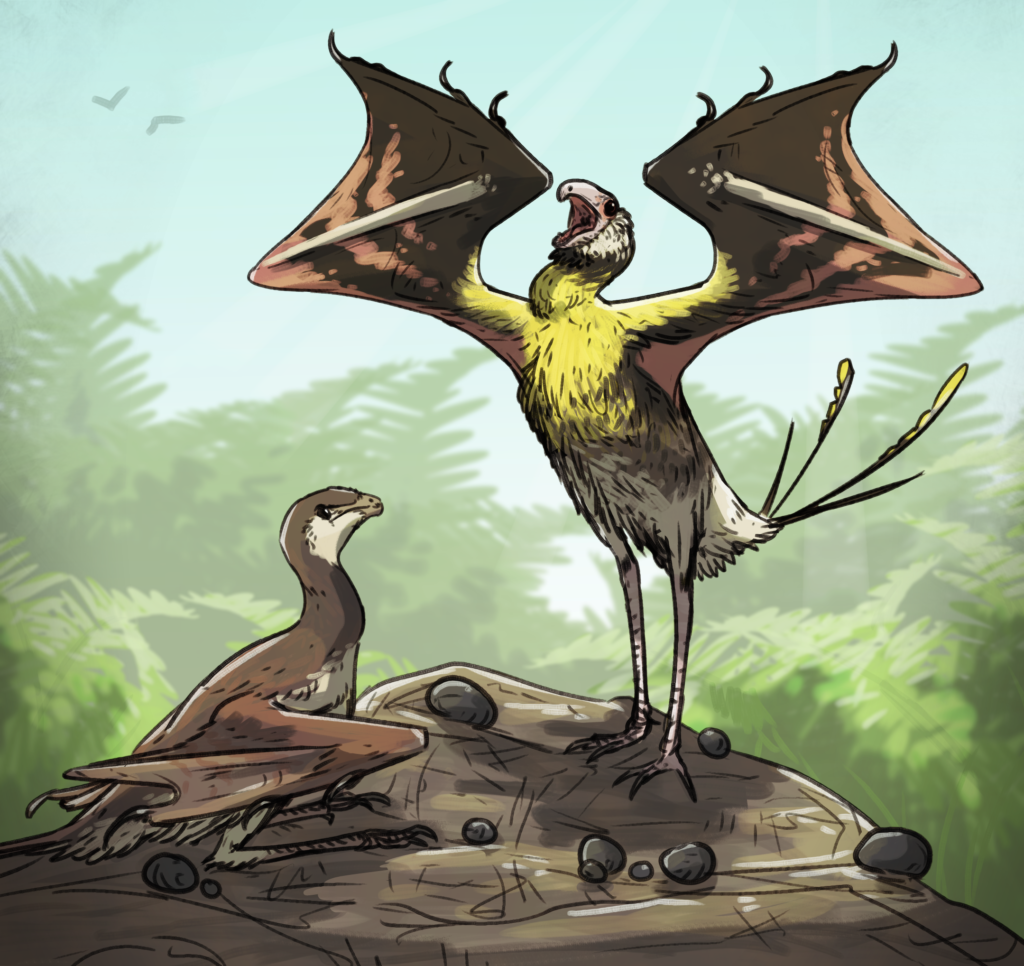
Not all evolutionary experiments in dinosaur flight followed the path that led to modern birds. Yi qi and Ambopteryx, two small dinosaurs from China’s Jurassic period, represent a fascinating evolutionary detour. Unlike their feathered relatives that would eventually give rise to birds, these unusual creatures evolved bat-like or flying squirrel-like membranes stretched between elongated finger bones and their bodies. Yi qi (meaning “strange wing” in Mandarin) had a wrist bone resembling a styliform, an extra rod-like bone that helped support its wing membrane, unlike anything seen in other dinosaurs or birds. These adaptations suggest these animals could glide between trees, representing a completely different approach to aerial locomotion than the feathered wings that proved successful in the bird lineage. The fact that this membrane-wing experiment appeared and disappeared relatively quickly in evolutionary time reminds us that evolution often produces multiple solutions to the same challenge, not all of which survive in the long term.
Miniaturization: Getting Small to Take Flight

One crucial trend in the evolution from dinosaurs to birds was dramatic miniaturization, as the ancestors of birds became progressively smaller over millions of years. Most dinosaurs in the theropod lineage leading to birds showed a steady reduction in body size, from large predators weighing hundreds of pounds to creatures weighing mere ounces. This miniaturization process was critical for flight evolution, as smaller bodies require less power to become airborne. The fossil record shows that maniraptoran dinosaurs, the group including the closest relatives of birds, underwent particularly rapid size reduction. Accompanying this decrease in size were proportional changes, including relatively larger brains, eyes, and wings, while features like teeth and bony tails became reduced. This pattern of miniaturization also allowed for faster growth rates and potentially higher metabolic rates, both characteristics essential for the active, high-energy lifestyle of flying birds.
The Breathing Revolution: Air Sacs and Hollow Bones

The evolution of bird-like respiratory systems began long before the first birds took to the air, representing another case where adaptations served one purpose before being co-opted for flight. Many theropod dinosaurs possessed hollow bones penetrated by air sacs, a feature that would later prove essential for the high-energy demands of avian flight. Unlike mammals, which use a tidal breathing system where air moves in and out through the same passages, birds evolved a unidirectional air flow system with multiple air sacs that allow for continuous oxygen absorption even during exhalation. Evidence from fossils shows that non-avian dinosaurs had pneumatic bones with openings where air sacs connected, indicating they had already evolved aspects of this efficient respiratory system. This adaptation may have originally evolved to help active predatory dinosaurs maintain high activity levels or regulate body temperature more effectively. Later, this pre-existing respiratory efficiency became crucial for powering the metabolically demanding activity of flight in birds.
Reconfiguring the Skeleton: From Dinosaur to Bird
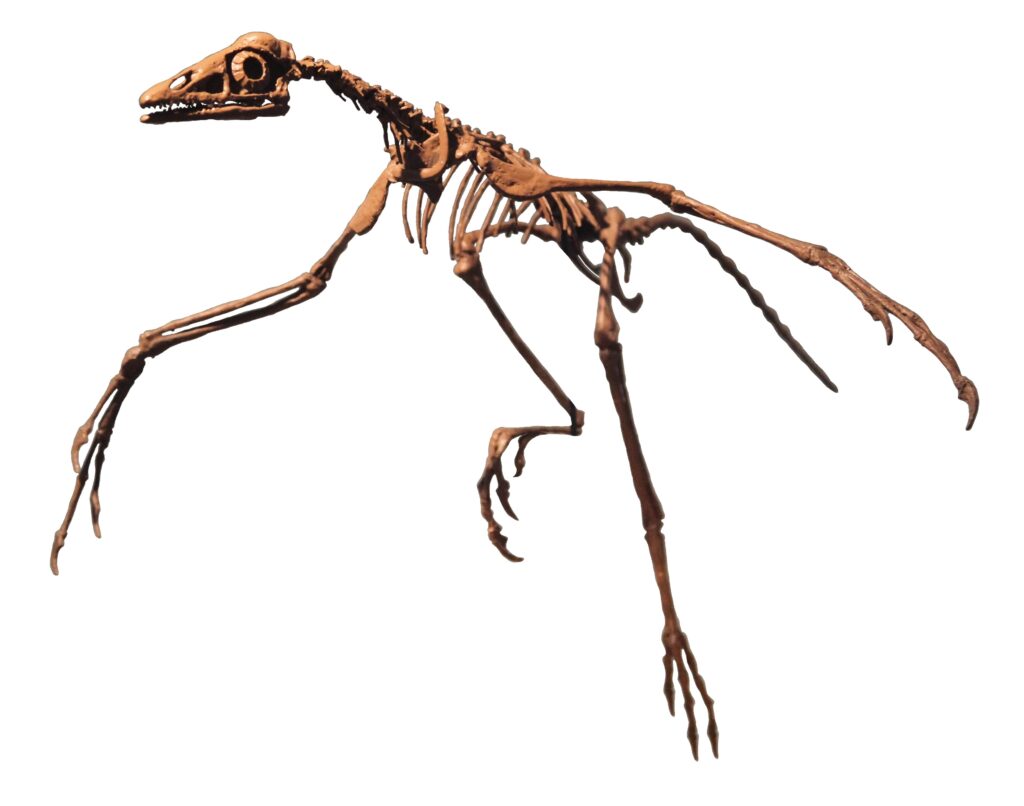
The transition from dinosaur to bird involved the dramatic reorganization of the skeleton, transforming heavy, ground-dwelling bodies into lightweight frames capable of aerial locomotion. The shoulder girdle underwent significant modification, with the shoulder blade (scapula) rotating to a position more parallel to the spine, allowing for the upstroke needed in flight. The wishbone (furcula), actually formed from fused clavicles, became increasingly flexible and spring-like to store energy during flight movements. Perhaps most dramatically, the sternum expanded into a large, keeled structure providing attachment points for powerful flight muscles. The hands of dinosaurs gradually transformed into wings, with some fingers fusing while others reduced or disappeared entirely. Meanwhile, the pelvis and hind limbs were reconfigured for landing and perching. These skeletal changes didn’t happen all at once but accumulated gradually across multiple lineages, with different bird-like dinosaurs showing various stages of this transformation.
Brain Power: Neurological Changes for Life in the Air
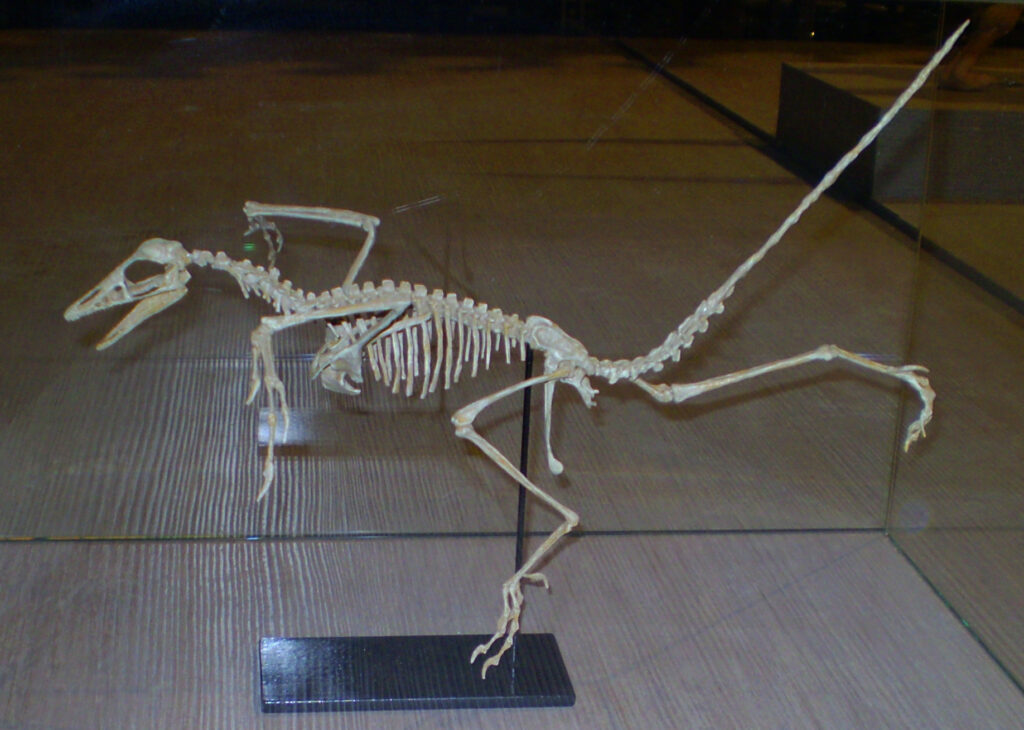
The evolution from dinosaur to bird wasn’t limited to external anatomy; significant neurological changes accompanied the transition to an aerial lifestyle. Brain endocasts from fossil skulls reveal that avian-line dinosaurs experienced dramatic enlargement of the cerebellum and visual processing regions, critical adaptations for the complex spatial awareness and coordination required for flight. The expanded cerebellum enabled the precise motor control necessary for aerial maneuvering, while enhanced visual regions supported the high-speed processing needed to navigate while flying. Interestingly, the olfactory bulbs generally decreased in size, suggesting that smell became less important as vision took precedence. These neurological changes began in non-flying dinosaurs, with species like Archaeopteryx showing brain proportions intermediate between typical dinosaurs and modern birds. The evolutionary enlargement of these brain regions provides compelling evidence that neural adaptations for flight were developing even before some dinosaurs became fully capable of powered flight.
Microraptor and the Four-Winged Phase
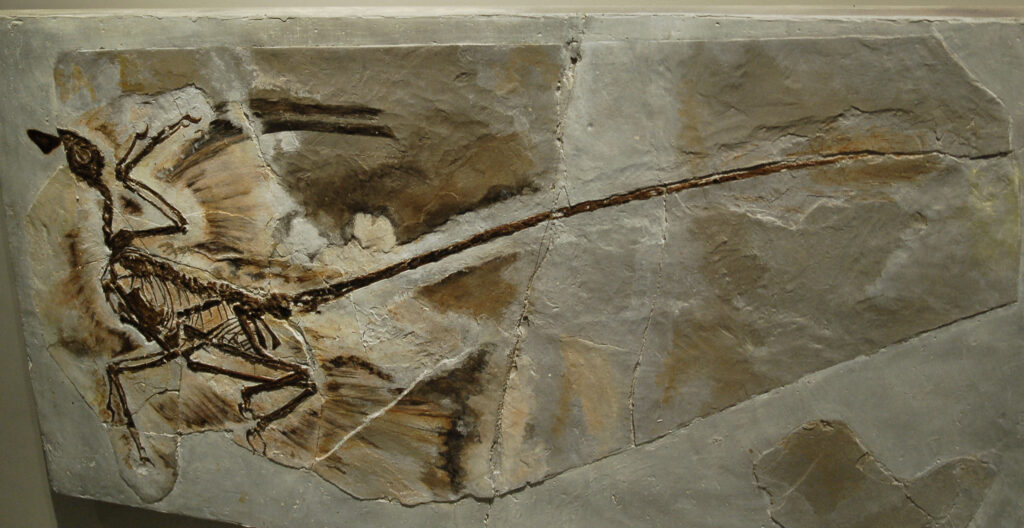
The discovery of Microraptor gui in 2003 revealed a surprising potential stage in the evolution of flight: a four-winged phase. This cat-sized dinosaur from Early Cretaceous China possessed not only feathered forelimbs but also long flight feathers on its hind limbs, effectively creating four wings. These asymmetrical feathers strongly suggest aerodynamic function rather than mere display or insulation. Careful studies of Microraptor’s anatomy indicate it was likely a proficient glider that could have moved between trees in forest environments. Some researchers propose that this four-winged configuration may represent a transitional stage in flight evolution, with later birds reducing hindlimb feathers to allow more effective terrestrial locomotion. Alternatively, Microraptor might represent a specialized side branch rather than a direct ancestor of modern birds. Either way, this remarkable creature demonstrates that evolution explored multiple approaches to aerial locomotion, including body plans quite different from the two-winged configuration that ultimately prevailed in modern birds.
Anchiornis: Wearing Dinosaur and Bird Clothes

Anchiornis huxleyi, a small feathered dinosaur from Late Jurassic China approximately 160 million years ago, exemplifies the mosaic nature of evolutionary transitions. About the size of a crow, Anchiornis possessed an extraordinary combination of dinosaurian and avian characteristics that blurs the traditional boundary between these groups. Its skeleton showed distinctly dinosaurian features, including teeth, a long bony tail, and hands with three distinct fingers ending in claws. Yet its body was completely covered in pennaceous feathers, including on all four limbs, with patterns remarkably similar to modern birds. Sophisticated chemical analysis has even revealed its coloration: a mainly black body with white-feathered wings spotted with black, and a rufous crest on its head. Despite its bird-like appearance, Anchiornis likely couldn’t fly and instead may have used its feathered limbs for gliding, display, or insulation. This creature represents a crucial piece of evidence showing how bird-like characteristics accumulated gradually in dinosaurs well before the emergence of true birds.
The Ongoing Debate: Where Do We Draw the Line?

The rich fossil record of feathered dinosaurs and early birds has created a genuine classification conundrum for paleontologists: where exactly should we draw the line between dinosaurs and birds? Traditional definitions based on flight ability fail because some dinosaurs like Microraptor may have been capable of some aerial locomotion, while some early birds like Archaeopteryx may have been limited fliers at best. Skeletal features also form a continuum rather than clear divisions, with bird-like characteristics appearing gradually throughout theropod evolution. Some scientists advocate for a phylogenetic definition, classifying birds as members of the group Avialae, which includes Archaeopteryx and all descendants of its most recent common ancestor with modern birds. Others prefer to recognize Aves as the group containing the most recent common ancestor of all living birds and all its descendants. This blurriness isn’t a failure of classification but rather powerful evidence of evolution in action, showing the gradual transformation of one major group into another through a series of intermediate forms.
Modern Birds: The Survivors of an Evolutionary Journey
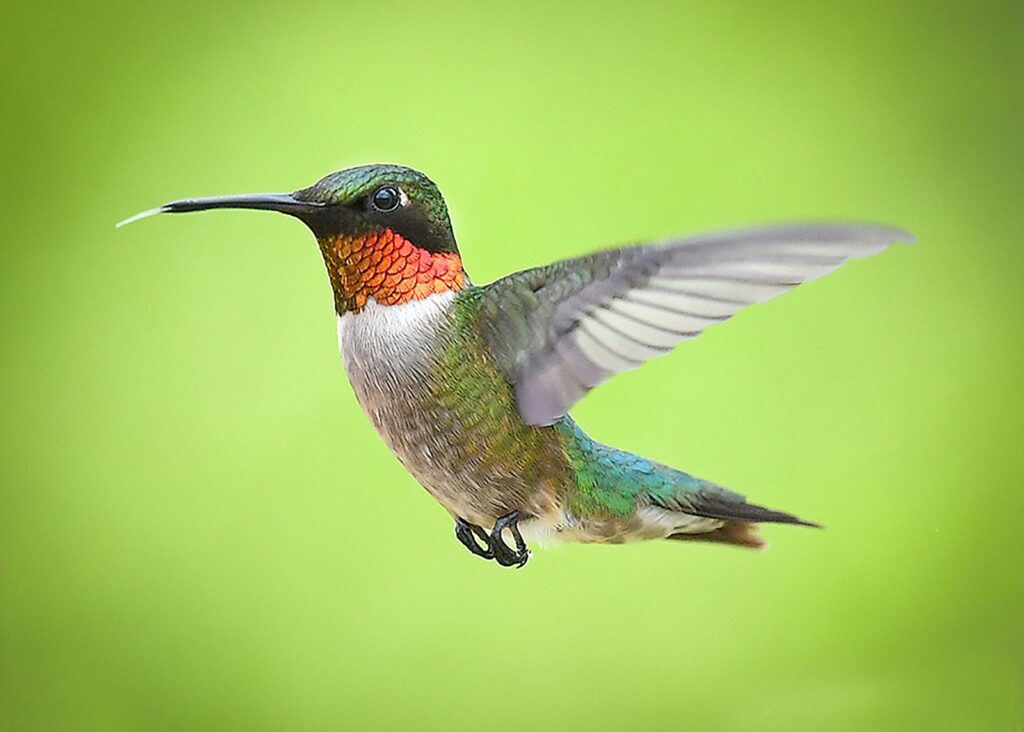
The approximately 10,000 species of birds alive today represent the sole survivors of a once more diverse group of avian dinosaurs. Modern birds (Neornithes) emerged before the end-Cretaceous mass extinction 66 million years ago but were relatively minor components of Mesozoic ecosystems compared to their non-avian dinosaur relatives. When the asteroid impact triggered global catastrophe, all non-avian dinosaurs perished, but some lineages of birds managed to survive, potentially due to adaptations like smaller body size, seeds in their diet (allowing them to survive when plant growth was temporarily halted), and possibly their ability to hide in burrows or other sheltered environments. From these few surviving lineages, birds diversified explosively in the early Cenozoic Era, evolving into the incredible variety of forms we see today. Despite their diversity in size, shape, and lifestyle, all modern birds retain the fundamental adaptations that evolved during their dinosaurian past: feathers, hollow bones, efficient respiratory systems, and the other features that first appeared in their dinosaur ancestors millions of years ago.
Transitional Fossils and the Dinosaur-Bird Bridge
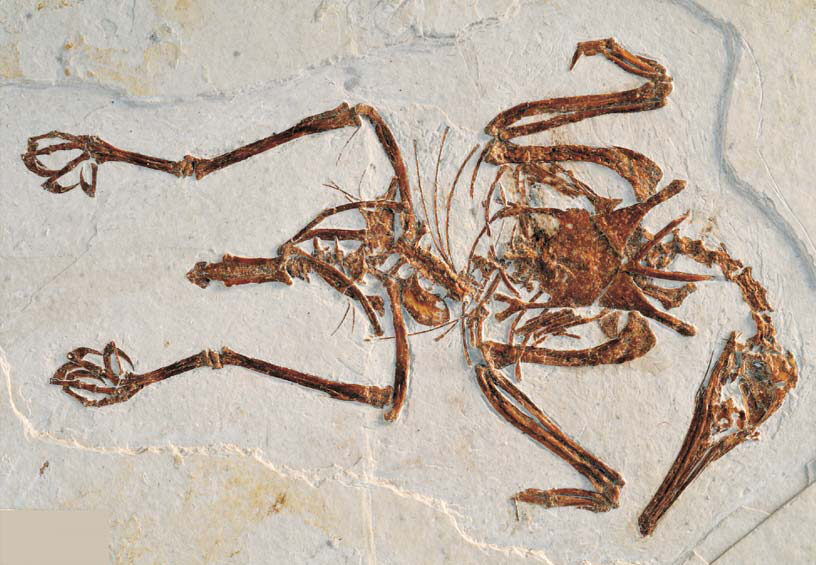
The fascinating transitional fossils between dinosaurs and birds offer one of the most compelling examples of macroevolution documented in the fossil record. These creatures, caught between worlds, demonstrate that nature doesn’t proceed in leaps but through gradual accumulations of change. The dinosaur-bird transition wasn’t a single event but a complex process spanning millions of years, with different lineages experimenting with various combinations of features. Some of these evolutionary experiments ended in extinction, while others led to the birds that fill our skies today. Far from being “undecided” creatures, these animals were perfectly adapted to their times and environments, showcasing evolution’s remarkable ability to repurpose existing structures into innovations. When we observe a modern bird in flight, we’re witnessing the culmination of an evolutionary journey that began more than 150 million years ago with small, feathered dinosaurs taking the first steps toward the sky.

